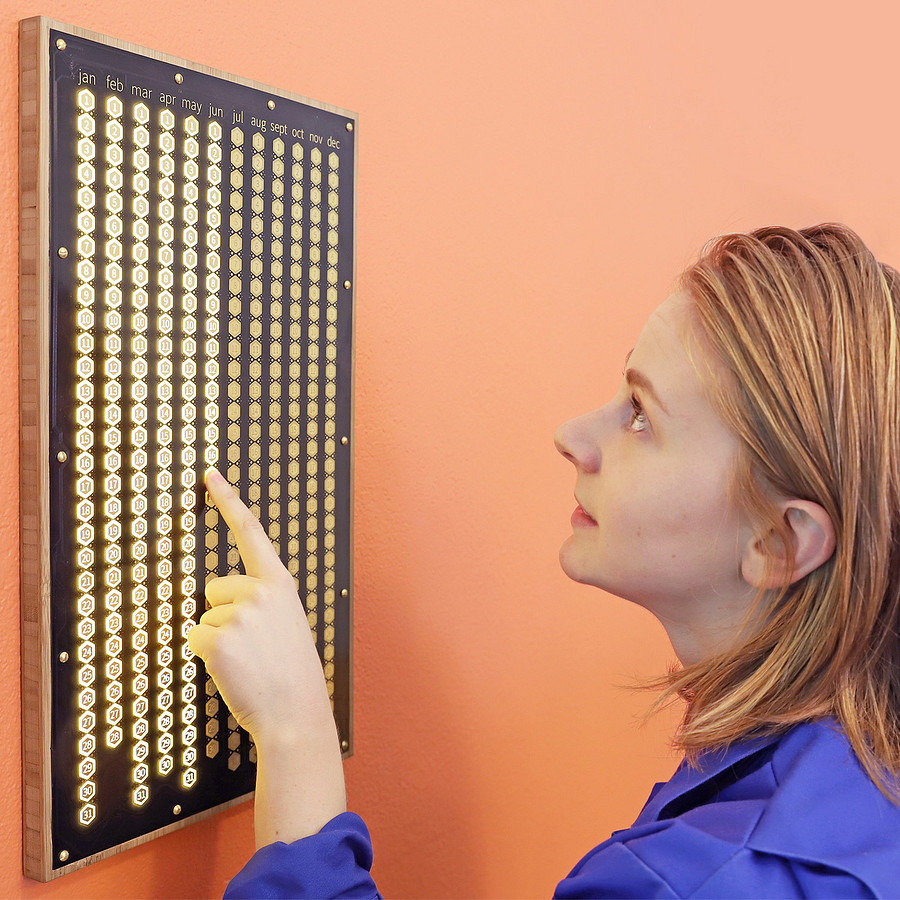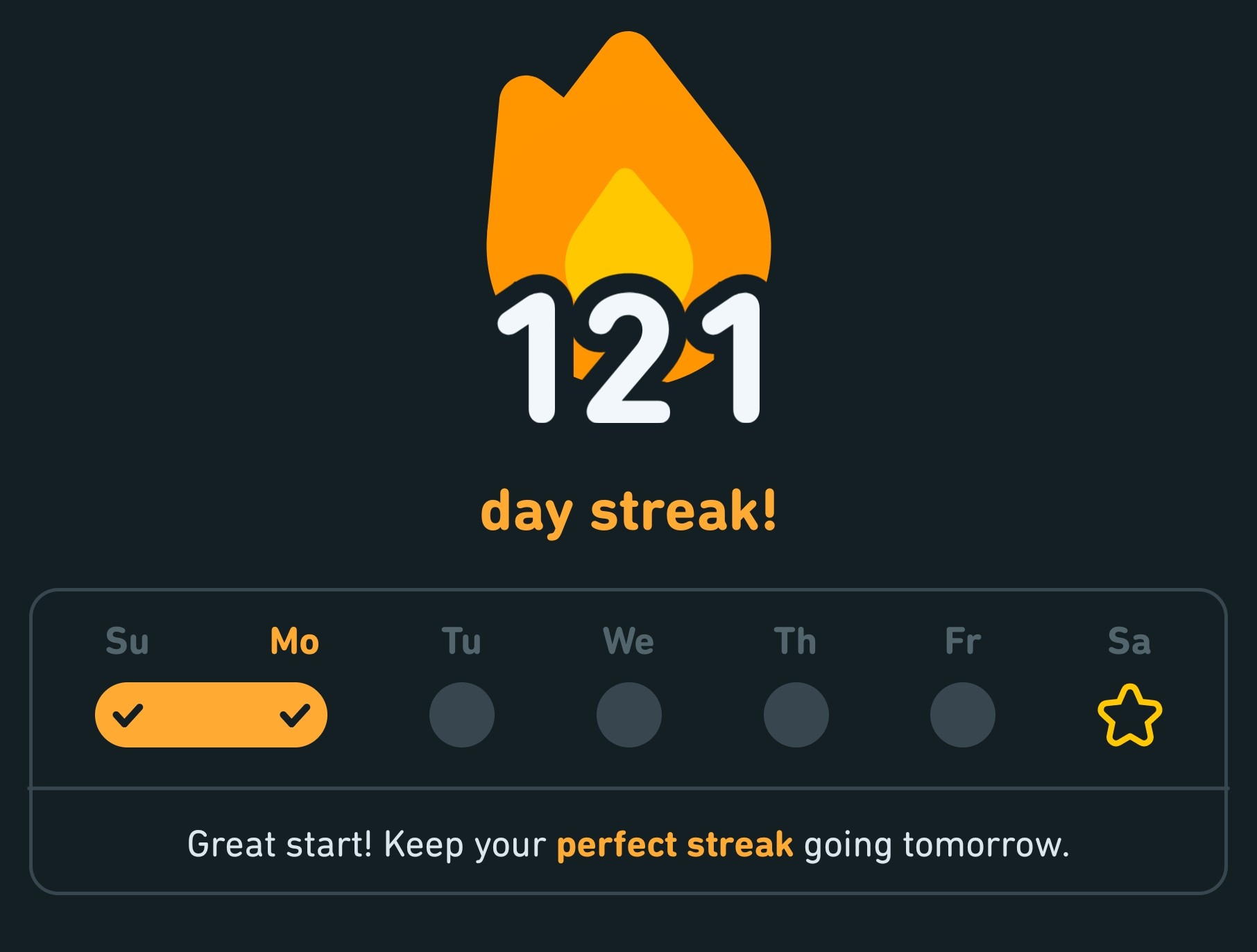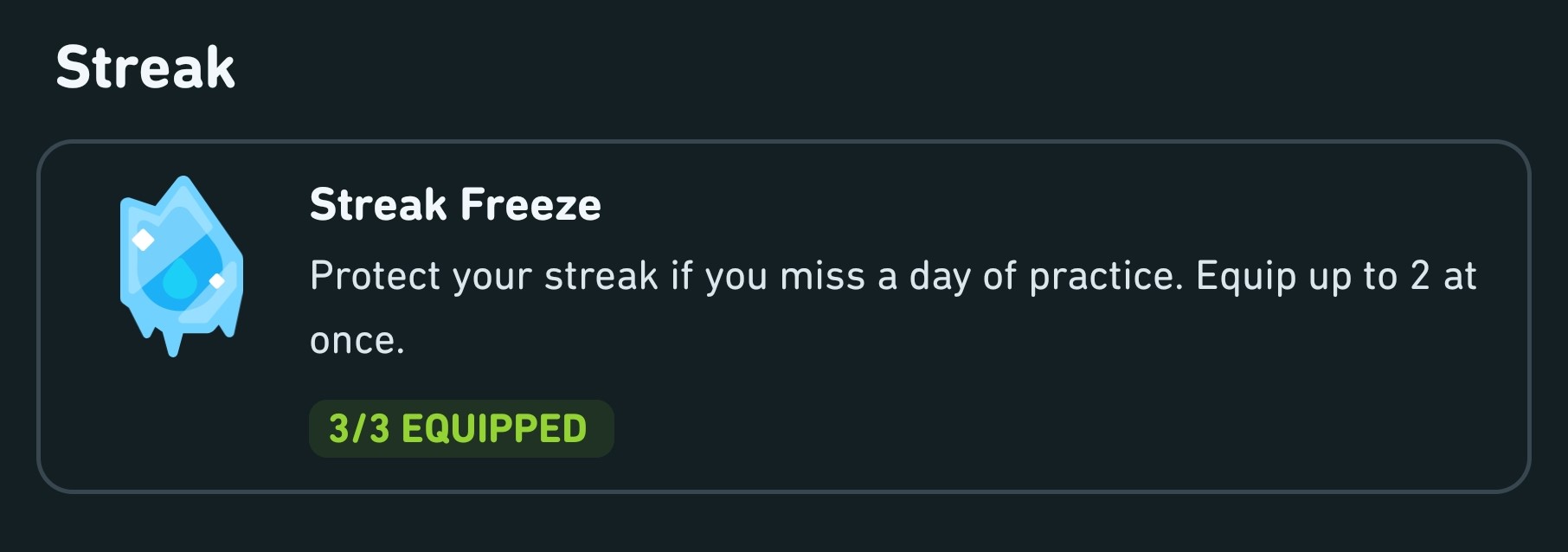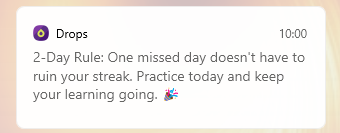Streak Redemption
For a lot of people, including myself, streaks are a powerful motivator. One of the purest implementations of this concept is Simone Giertz's Everyday Calendar.

By pushing a button for every day you manage to achieve your goal, you create a visual representation of your progress, which helps turning chores into habits.
Conversely, losing a streak can be so demoralizing that it can be difficult to start from scratch, and get going again. The Everyday Calendar is forgiving: even if you don't light up one of the days, you still see your earlier streak, and your progress. You could even come up with your own rules for when you're allowed to push yesterday's button.

But software is unyielding. If you lose a streak in Duolingo, it's just gone, and you're at zero again. Duolingo recognizes this problem, and gives you a limited number of streak freezes, which allow you to continue a streak even if you miss a day or two.

The problem with Duolingo's approach is that you have to prepare for a streak loss ahead of time, but streak losses are not something you anticipate. You can't anticipate getting sick or having some kind of emergency that prevents you from continuing your streak.
A few days ago, I hosted a party. I ran around all day preparing things, and then guests arrived, and it was almost midnight when I remembered that I hadn't opened Duolingo all day. By then, it was too late to do anything about it.
Over at Stuff, Craig Grannell is offering a better solution to the problem: a way to recover from a streak loss after it has happened, based on an idea found in the videogame Defender, released all the way back in 1981.

In this arcade game, your task is to rescue little humans before aliens steal them. But even if the aliens grab all of them, you still have a chance at redemption: if you manage to stay alive for a few levels longer, you get your humans back.
Thus Craig's suggestion: if your app has a streak feature, provide some way to recover from a streak loss after it has happened.
This could be a harder task that makes up for a lost day, or maybe a lost day is redeemed if the user manages to continue the streak for a certain amount of days, or perhaps it's something else.
Drop, for example, has something called the "2-Day Rule", which allows you to miss one day without losing your streak.

Another example is HabitBoard, which shows previous streaks even if you miss a day, and allows you to intentionally skip a day without missing the streak. Florian Heidenreich, HabitBoard's author, has written about his thinking behind its design here.
Regardless: if you do have streaks in your app, to avoid completely demoralizing your users after a streak loss, offer them a chance at streak redemption.
Read more at Stuff: I lost my Apple Watch streak – here’s why it should have more humanity.
If you require a short url to link to this article, please use http://ignco.de/797




